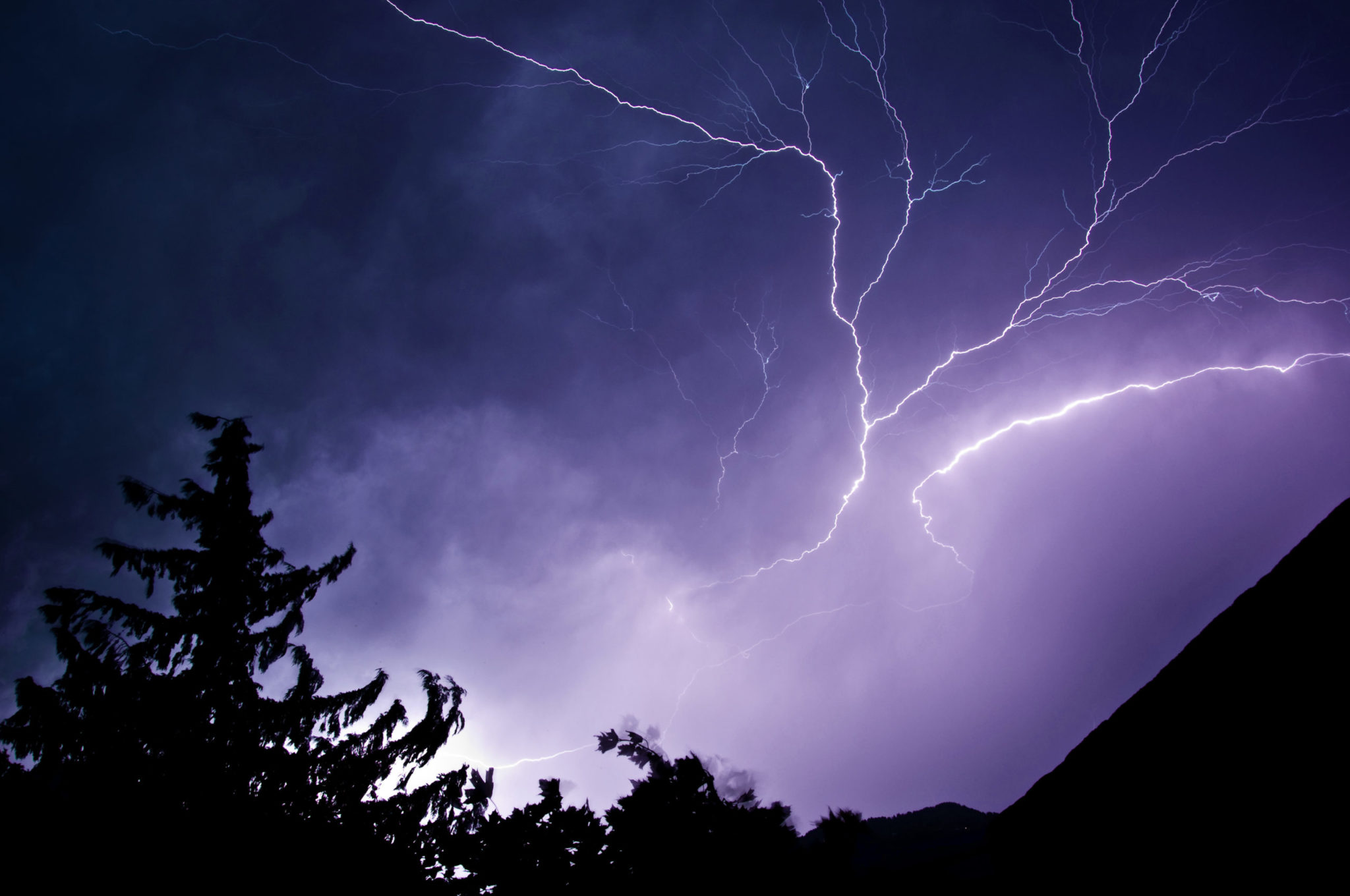
Wikimedia Commons
A new study by researchers at Yale and the University of Leeds suggests that prehistoric lightning bolts may have produced the biologically active phosphorus that was integral to the creation of biomolecules — the building blocks of life.
The paper was published this month in Nature Communications and shows that the phosphorus-containing mineral schreibersite, which is soluble in water and therefore a biologically active form of phosphorous that organisms can use, can be formed when a certain type of glass found in soil called fulgurites are struck by lightning. This finding contributes to researchers’ quest to find the source of life on Earth, as it helps to answer the question of how phosphorus on the planet was converted into a usable form to help create DNA, RNA and other biomolecules.
The role of lightning strikes in the origin of life is an alternative to the also prevalent idea that meteorites were the main mechanism through which phosphorus was supplied to early Earth. The meteorites were believed to contain schreibersite and have impacted the Earth’s surface with enough frequency to create the conditions necessary for biological life.
“It had been previously suggested that schreibersite was a good candidate for the bioavailable phosphorus necessary for the emergence of life,” Sandra Piazolo, one of the study’s co-authors and professor of structural geology and tectonics at the University of Leeds, said. “This mineral had been found in meteorites, and it was known that there was a high frequency of meteorite impact in early Earth. This combination meant that it made sense to say that meteorites were the main source for the schreibersite. We have built upon this by showing that lightning strikes could have been as important or even more important to facilitate this phosphorus, by not bringing it in externally, but instead actually forming it on Earth.”
The drawback to the meteorite theory has to do with the frequency of meteorites arriving on Earth in prehistoric times, according to the study. The paper explains that 3.5 to 4.5 billion years ago, the period when many scientists think life began, there was a dramatic decrease in the frequency of meteorite collisions on Earth.
Benjamin Hess GRD ’25, a graduate student in Yale’s Department of Earth and Planetary Sciences who was the study’s lead author, explained that investigating lightning strikes for the study was actually a lucky finding rather than an intentional investigation into schreibersite formation.
“The study started because we were initially interested in studying the effects of extreme flash heating as preserved in our fulgurite (glass created by a lightning strike) sample,” Hess wrote in an email to the News. “But in the process, we found many small, strange spherules in the glass structure. We identified them as the mineral schreibersite. It had been found in fulgurites before, but not in this abundance … Once we learned the significance of schreibersite, we endeavored to test the hypothesis that lightning strikes could actually be an important source of schreibersite compared to meteoritic sources.”
To conduct this study, the researchers used computer modeling to estimate that early Earth saw one to five billion lightning flashes annually, compared to about 560 million flashes per year today. The researchers predicted that of those flashes, anywhere from 100 million to one billion would have struck the ground every year. This totals to somewhere between 0.1 to one quintillion strikes since prehistoric times, an amount which could have created a significant quantity of usable phosphorus.
Phosphorus is an essential ingredient in the formation of life, but though it was abundant, it was not easily accessible on Earth billions of years ago, according to the study. For the most part, phosphorus was in a form that was not conducive to use by living organisms.
“Phosphorus is usually present as a pretty insoluble phosphate that is difficult to move around,” said Jason Harvey, one of the study’s co-authors and associate professor of geochemistry at the University of Leeds. “Once you zap it with a massive amount of energy and reduce it to a more soluble form, it becomes more available. This is not a case of delivering [usable phosphorus] from an external source, but more of a case of conversion to the appropriate form.”
According to Harvey and Piazolo, the most challenging aspect of the investigation was making sure that they did not either vastly overestimate or underestimate the amount of the mineral schreibersite that they were predicting had been produced by lightning.
Harvey emphasized that when the researchers were computing their estimates for the amount of schreibersite that was formed as well as how much bioavailable phosphorus could result from it, they made sure to be conservative in their estimates.
“We proceeded very cautiously with this, because it was kind of peripheral to our expertise specifically in terms of the emergence of life,” Harvey said. “The analytical side was all fine, as we do this all day everyday. We just had to be careful to not claim to have solved the world with fulgurites.”
The researchers also noted that the lightning strike theory has other notable advantages. The nature of lightning strikes meant that the annual number of them would have remained relatively constant, unlike the number of meteorite collisions each year. Lightning strikes were also more likely than meteorites to occur on land masses in tropical regions, which could produce more concentrated areas of usable phosphorus.
Harvey also said that lightning strikes could have served as a vital kickstart for life on Earth at any point in the planet’s history, as long as the atmospheric condition was suitable for the production of lightning. Meteorites, on the other hand, would likely only have been present at the beginning of Earth’s history. This feature of lightning strikes lengthens the period of time in which life could have formed, increasing the likelihood that lightning contributed to the formation of life on Earth, according to the researchers.
To further investigate this area, the researchers are also interested in studying other rock types that were present in the relevant time period and looking into how they may have changed the chemistry of early Earth.
“Studying fulgurites formed in rocks that are more similar to those that would have been present on early Earth, such as volcanic islands like Hawaii, would allow us to better constrain the estimates of how much phosphorus is made available by lightning on early Earth.”
Life is widely thought to have begun at least 3.5 billion years ago, as that is the age of the oldest fossil evidence of life on Earth.
Mai Chen | mai.chen@yale.edu










